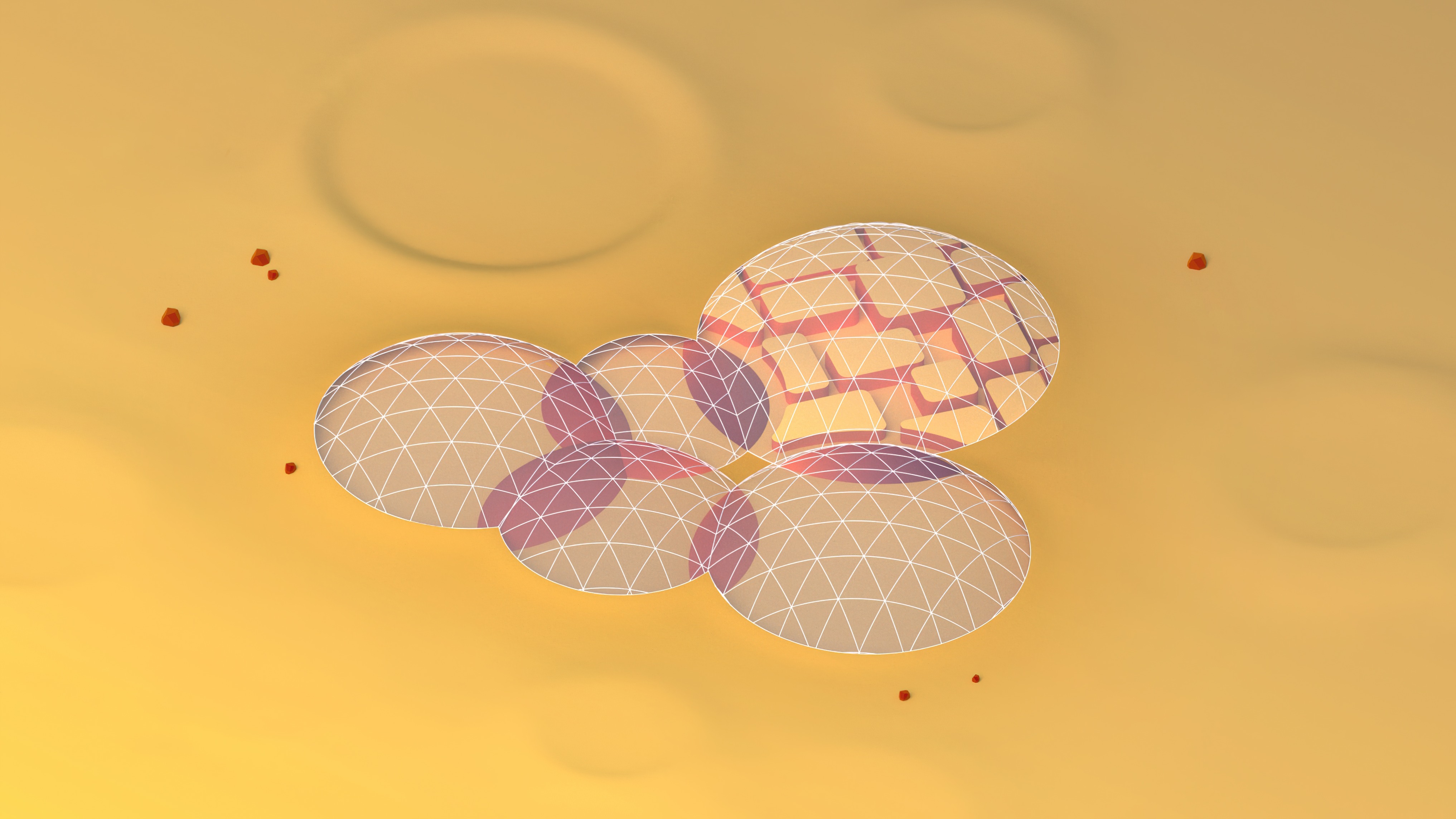STATUS
IDEA
DUBAI, UNITED ARAB EMIRATES
CLIENT
Government of United Arab Emirates
TYPOLOGY
Space
SIZE M2/FT2
56,810 / 611,503
STATUS
IDEA
SHARE
Mars Science City is a prototypical test site for a sustained city on Mars. Using the same techniques as on the Moon – robotic construction, excavation, 3D printing, and inflatable membranes – BIG aims to build a campus on Earth to host education and engineering, science and agriculture, conferences, and exhibitions related to interplanetary exploration and settlement.
Working and living in Mars Science City will allow us to gain experience with climate control, safety, quality of construction, and resilience of human-made ecosystems that will be invaluable when we finally go to Mars and to our work on Earth. Part academic, part commercial, part exhibition, it will act as a Martian embassy on Earth – the first foothold of our neighbor planet on Terran soil.
Mars is our immediate neighbor, one spot farther away from the Sun. When Earth and Mars are aligned, it only takes three months to get there.
Designing to low gravity, low atmospheric pressure, extreme colds, and high levels of radiation radically changes the architect’s tool kit and the resulting forms and spaces.
Often referred to as The Red Planet due to the iron oxide prevalent on its surface, at nightfall, fine-grain dust particles in the thin atmosphere turn the Martian sunsets blue.
Due to its rotational period, as well as its axial tilt relative to the ecliptic plane, its season and day cycles are extremely similar to Earth’s. It is the home to the highest mountain in the Solar System, Olympus Mons – a staggering three times taller than Mount Everest. It is also home to Valles Marineris, one of the largest canyons in the Solar System. Mars has two tiny moons, Phobos and Deimos – the Greek gods of fear and terror.
Mars has an abundance of regolith, which can get sorted into ice for water, stones, and sand. Sorting the sand further creates aluminum and glass to make technology and solar cells. This leads to the production of power; with power and water, we can make electrolysis and split the water into hydrogen and oxygen.
With the CO2-rich atmosphere on Mars, we can use a Sabatier reactor to create methane for rocket propellant – to enable travel back to Earth.
The byproducts are water and carbon monoxide. Combined with the iron oxide, we can make steel and with further chemical reactors, we can make hard and soft plastics! Every single resource will be recycled. The soft plastics will give us inflatable membranes, so we can make pressurized environments where we can grow plants… and have rootzone gardens for water purification so we can even start enjoying the water. We can create agriculture, hydroponics, and aquaponics to grow food… to sustain human life!
BIG has created an entire human-made ecosystem working with the ingredients
that are already there plus the knowledge, creativity, and tools that we bring from Earth.
Learning from Earth, we basically have three different ways to build:
Inflatables are great for creating pressurized environments, but not really for shielding
against radiation or meteors. 3D-printed structures using local regolith provide shelter
and privacy but insufficient protection—and finally excavated spaces provide full protection but no daylight. So no alternative works on its own, but combined they tick all boxes!
The modules can multiply and combine to form neighborhoods and cities leading to a human habitat in 2217. In the meantime, the Mars Science City prototype will be built in Dubai, in a landscape visually similar to Mars, but a lot warmer.
"When you begin to inhabit a world that has no existing eco-system, environmentalism takes on a whole new meaning. The challenge is not to preserve the existing environment, but rather to design and engineer a whole new man-made ecosystem, making us take the step up from custodians to creators of our own little Martian circle of life."
People will be able to walk the 3D-printed streets of a Martian town and experience how living on Mars will be very different from the pre-conception of living in a small confined space.
At its most fundamental, architecture is the art and science of making our world more suitable for human life. This becomes fundamentally clear when we venture beyond our Terran origins to settle in foreign worlds. The most successful architecture is that of vernacular architecture – where it adapts to the local climates and landscapes.
The question “Why Mars” comes up often with the many issues we face on Earth. However, looking at the 17 sustainable development
goals of the United Nations, eight of them deal directly with the built or planned environment. Earth has 1.5 billion cubic meters of water while Mars only has 5 million; Earth has rather abundant agriculture, while on Mars we have to be 10 times more efficient; on Earth, the main source of global warming is our reliance on fossil fuels, while Mars has no fossil fuels – because there are no fossils – so all power will be renewable. The very same principles and technologies that will allow us to live on Mars are the ones that will make us great custodians on the planet we live on today.
The answer to our challenges here on Earth may very well be found on Mars!
Bjarke Ingels Jakob Lange Andreas Klok Pedersen Andrea Terceros Barron Andy Coward Cæcilie Søs Brandt-Olsen Christian Eugenius Kuczynski Diana Daoud Dimitrie Grigorescu Duncan Horswill Teodor Cristian Fratila Hugo Yun Tong Soo Ivaylo Ignatov Joanna Anna Jakubowska Joanna M. Lesna Kristoffer Negendahl Luca Pileri Mattia Di Carlo Ovidiu Munteanu Paula Madrid Sze Ki Wong Tore Banke Tyrone Cobcroft Ulla Hornsyld Viktoria Millentrup Yasmin Asan Yehezkiel Wiliardy Manik João Albuquerque
Mohammed bin Rashid Space Centre
Dubai Municipality
BIG Landscape
BIG Ideas
BIG Engineering









